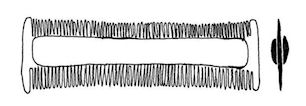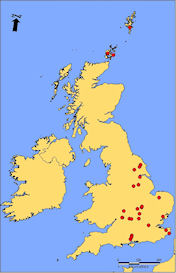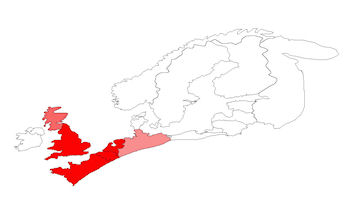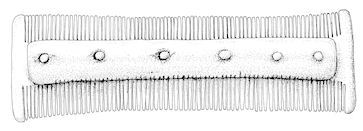
|  |
 |
 [Legend] |
 |

|  |
 |
 [Legend] |
 |
Type 12 comprises double-sided combs that are fixed with iron rivets, are of more elongate form than Type 11, but which are generally more rudimentary in form and construction. Their relationship with Type 11, particularly with regard to their appearance in Atlantic Scotland, is discussed in more detail in Ashby 2009. In brief, Type 12 combs are distinguished by their undifferentiated teeth, and the plano-convex section of their connecting plates, many of which are unornamented. They are known across much of northern Europe, and have conventionally been dated to the period between the 5th and 9th centuries (e.g. Roes 1963, 14; West 1985, 128). A small number of late developments of the Type 12 format are also known, particularly in 11th- to 12th-century England and northern France. These combs are usually ornamented and feature differentiated teeth, but otherwise fit neatly into the mainstream of the Type 12 tradition. Their ornament, and their use of iron rivets, clearly separates them from the Scandinavian Type 13.
The comments facility has now been turned off.
© Internet Archaeology/Author(s)
University of York legal statements | Terms and Conditions
| File last updated: Tue Sep 20 2011